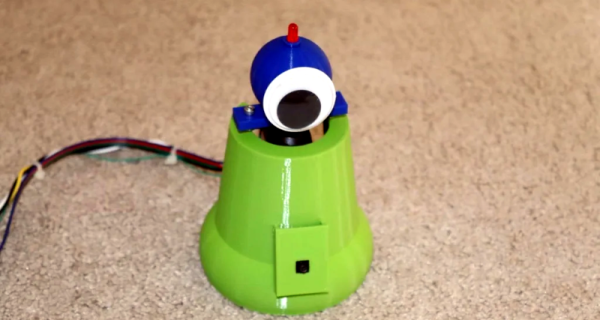We have a soft spot for devices that subvert purpose and expectation, and that definitely sums up [Guy Dupont]’s Clock That Is Wrong. It knows the correct time, but whether or not it displays the correct time is another story. That’s because nestled just above the 7-segment display is a person sensor module, and when it detects that a person is looking towards it, the clock will display an incorrect time, therefore self-defeating both the purpose and primary use case of a clock in one stroke.
 The person sensor is a tiny board with tiny camera that constantly does its best to determine whether a person is in view, and whether they are looking towards the sensor. It’s a good fit for a project like this, and it means that one can look at the clock from an oblique angle (meaning one is out of view of the sensor) and see the correct time. But once one moves in front of it, the time changes. You can watch a brief video of it in action in this Twitter thread.
The person sensor is a tiny board with tiny camera that constantly does its best to determine whether a person is in view, and whether they are looking towards the sensor. It’s a good fit for a project like this, and it means that one can look at the clock from an oblique angle (meaning one is out of view of the sensor) and see the correct time. But once one moves in front of it, the time changes. You can watch a brief video of it in action in this Twitter thread.
One interesting bit is that [Guy] uses an ESP32-based board to drive everything, but had some reservations about making a clock without an RTC. However, he found that simply syncing time over the network every 10 minutes or so using the board’s built-in WiFi was perfectly serviceable, at least for a device like this.
This reminds us a little of other clocks with subtly subversive elements, like the Vetinari Clock which keeps overall accurate time despite irregularly drifting in and out of sync. Intrigued by such ideas? You’re not alone, because there are even DIY hobby options for non-standard clock movements. Adding the ability to detect when someone is looking directly at such a device opens up possibilities, so keep it in mind if it’s time for a weekend project.














